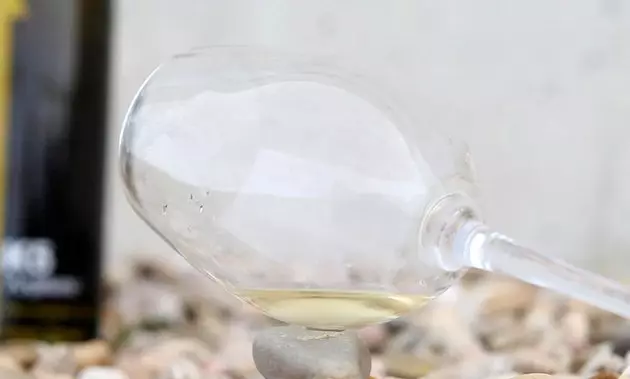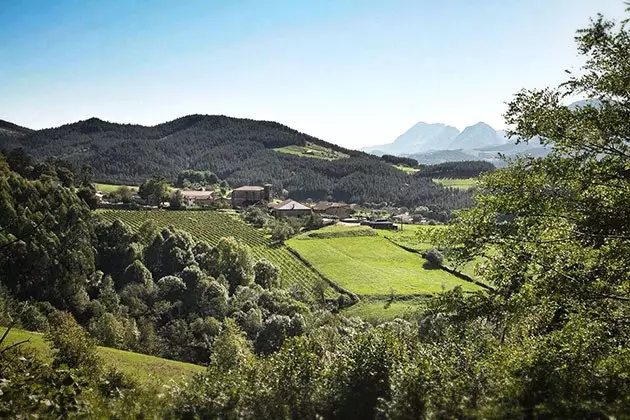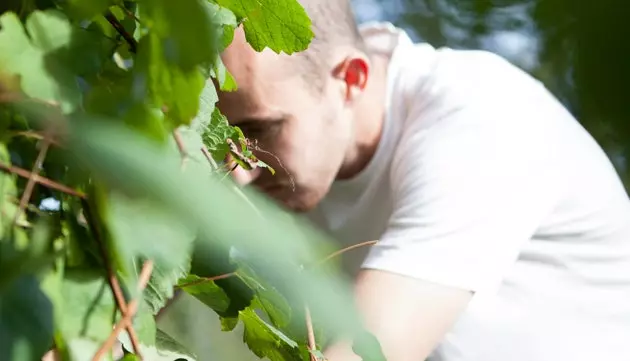
Txakoli from K5 Argiñano
To the point: the wine situation in Spain is catastrophic. Worse than that. Wine consumption in Spain has reached its historical minimum and is declining, as it does every year (0.9 percent in 2012). Spain - by the way, the largest vineyard in the world in number of hectares (more than a million) is, however, the country in the Euro zone where the least wine is consumed. From far. A Chinese drinks more wine than a Riojan, that's how the patio is.
We drink red wine and buy the wine at the supermarket. Data? 70 percent of the wine consumed in Spain belongs to the D.O. Rioja and 71.10 percent of purchases are made in the supermarket (in the United Kingdom, Germany or the new world, white consumption is close to 50 percent). More miseries: young people do not consume wine and 10 euros is the maximum price that an overwhelming majority of consumers are willing to pay for a bottle of wine (remember what a measly gin and tonic cost?).
"THE BEST WHITE, A RED"
The guy who said that should be hanged; to him and to each one of the clever people who continues with the couplet thirty years later. Wine is not drunk in Spain (this is a fact) and the new generations of consumers prefer to drink beer (that concoction created by Sumerians and popularized by Bavarians, peoples both characterized by their finesse and elegance) which makes sense, because ¿ what is the alternative in many of its bars? That's right, a poorly preserved red wine or a vintage Verdejo.
But is there hope? Yes, there is. It's called leaving behind the popular proverb "no dinner without wine, no pot without bacon", remove wine from the table (and the tablecloth) and plant it on the bars and on the terraces . It's called leaving behind the snobbery of so many tasting clubs (you should see how ridiculous we do so many times in blind tastings), the heritage of the vintage and the "Grand Reserves" and enjoy the wine for what it is, for what it is also: an easy drink, social and friendly. No more no less.
"YOU'RE GOING TO LOVE IT, IT'S VERY FRUIT"
White wine is the key to the survival of wine consumption in Spain (do they really want us to drink a glass of Tinta de Toro in June on a Juan Bravo terrace?), but little by little (very little by little ) something is changing. On the one hand, winegrowers and wineries are committed to **the recovery of classic varieties (verdejo, godello, treixadura, albariño, loureiro, xarel lo or malvasia) ** "authors" such as Telmo Rodríguez, Raúl Pérez or Sára Pérez play white and consumption grows; and it grows giving field to family wineries, committed to the vineyard (finally) and to its history.
My bet is called txakoli.
And now (if you allow me) comes my particular oracle of Delphi. I have given so much the grill with the frame of Jerez (so many times) as my great wine bet that I will dedicate this arena today to make way for my other bet: chacolí. Txakoli.
Txakoli has been the great mistreated among the mistreated, the most despised of white wines , capable of single-handedly bringing together all the anathemas and prejudices that have fallen on white: sour, acid, undrinkable, "serve it very cold" or better, lie, say it's "fruity", sell it to the girls -who like it that way , “fruity”. A disaster.
The curious thing is that precisely that minerality is the treasure. In that point of acidity the miracle hides , the nerve, the elegance, the cramp. That invisible thread (which some crazy people see) that indissociably connects Jerez with Champagne, and why not also with these new honest and artisan txakolis.

The vineyards, a key factor in the resurrection of txakoli
Txakoli in its three Denominations of Origin (Álava, Vizcaya and Guetaria) as the spearhead of what -I believe- is the new paradigm of the "taste" of the wine drinker: freshness, carefree , shots as little transcendental as necessary. Wines to drink, in short. I talk about txakoli with José Ramón Calvo, winemaker at the Gorka Izaguirre winery (owned by Eneko Atxa's family, Azurmendi)
“Gone are the times when txakoli lived up to its description in the R.A.E. dictionary. of slightly sour light wine. In recent years, a new generation of young viticulturists and oenologists have made an important regeneration of the world of txakoli, which is based on the vineyard ; the selection of plots and clones, as well as improvements in the cultivation of the Ondarrabi Zuri and the Ondarrabi Zerratia, managing to obtain small grapes from these vines, which without losing the characteristics of the variety, concentrate not only sugars, but also a long list of aromas and flavors that transfer to the wine the minerality of the soil in which they are grown, as well as the imprint left by the difficult Atlantic climate.
These new txakolies, in which acidity goes from being the main character of the work to a perfect secondary that gives freshness to the whole , are already touring the streets not only of our country, but of the whole world”

A good txakoli is cooked in the Karlos Argiñano vineyards
The consumption of txakoli is growing, and it is growing continuously, especially on the international scene (the export to the US market has multiplied almost by 10) where the stupid prejudices that we drag here do not exist. Eric Asimoc, wine critic for The New York Times (a good family friend, in love -of course- with Cádiz and the Jerez area) writes a nice article about this “unknown, invigorating and refreshing” wine: "you can feel the txakoli everywhere; in the restaurants and tapas bars, on the terraces overlooking the ocean or in the dark and rustic wooden or stone cellars".
And another factor, the land. Rediscover our land and our roots (our history, after all), I speak with José Ramón about vineyards and history: “In a globalized planet where one can find Sauvignon and Chardonnay from almost any origin, it is a pleasure to drink a different wine from its base; The Ondarrabi Zuri and the Ondarrabi Zerratia. Two varieties of autochthonous grapes and not extended throughout the world that offer palates something new and different”.
And I wonder… Will we see -will we drink- txakoli in the bars of Barcelona, Madrid or Salamanca? “Little by little, from Japan to Los Angeles passing through Singapore, txakoli is growing in the markets in the same way that it has done in quality; offering the consumer renewed tradition. Fresh wines, where white fruits coexist with flowers and minerality. Pleasant wines to drink at any time both as an aperitif and with a meal”.
Drink to that. With txakoli.
